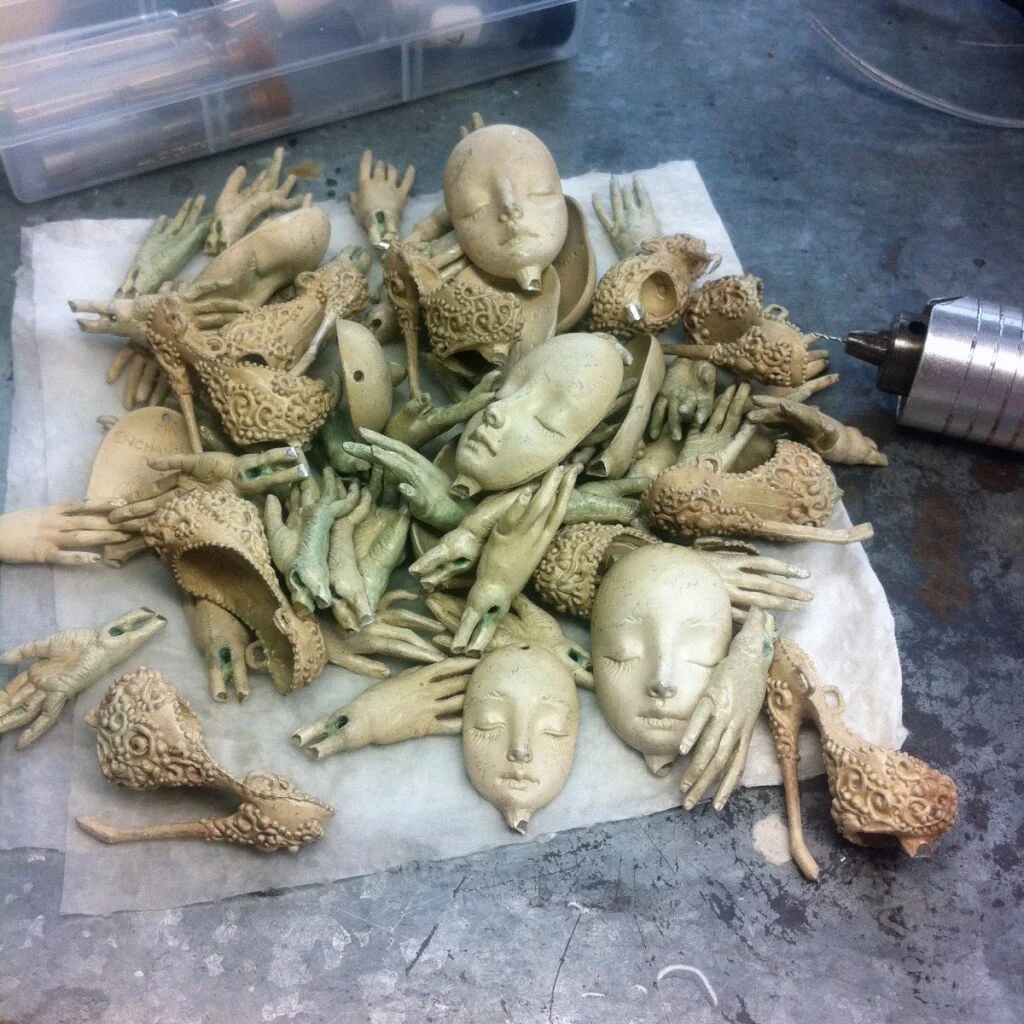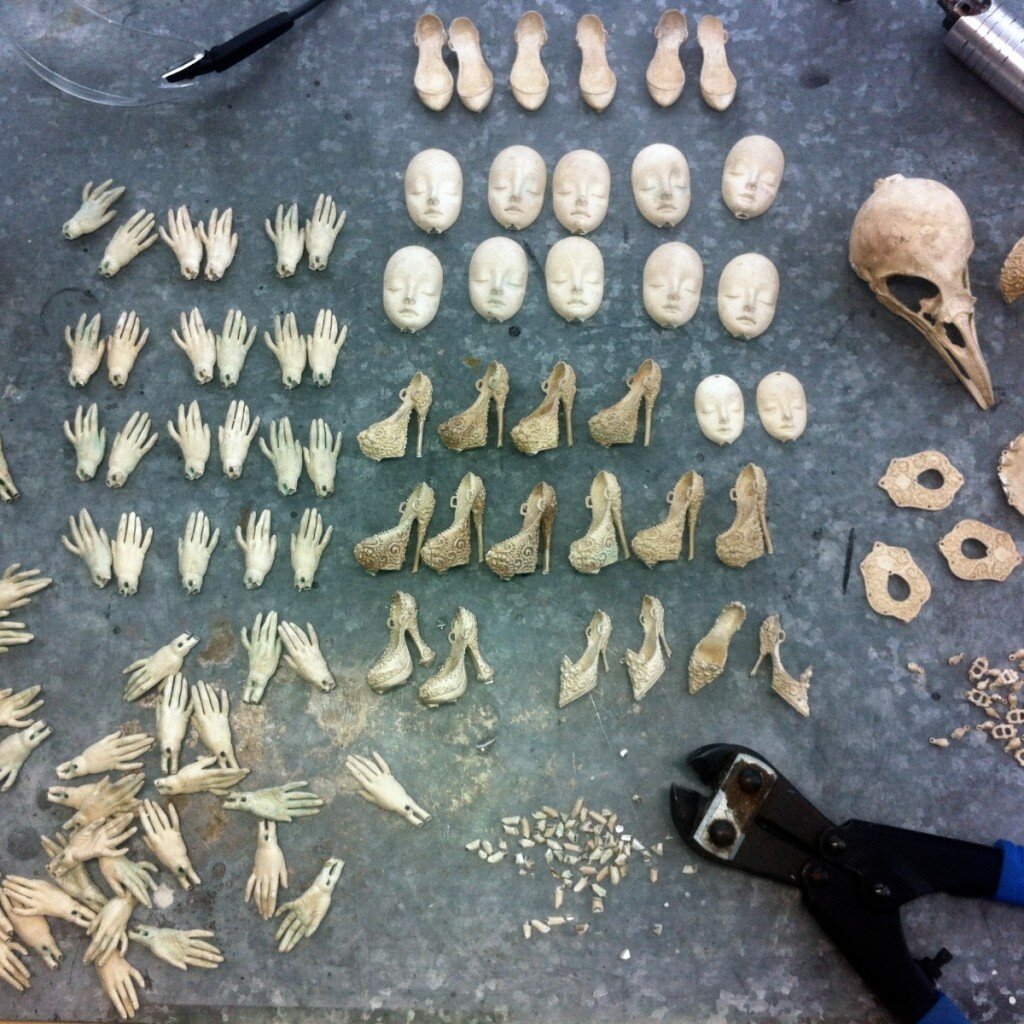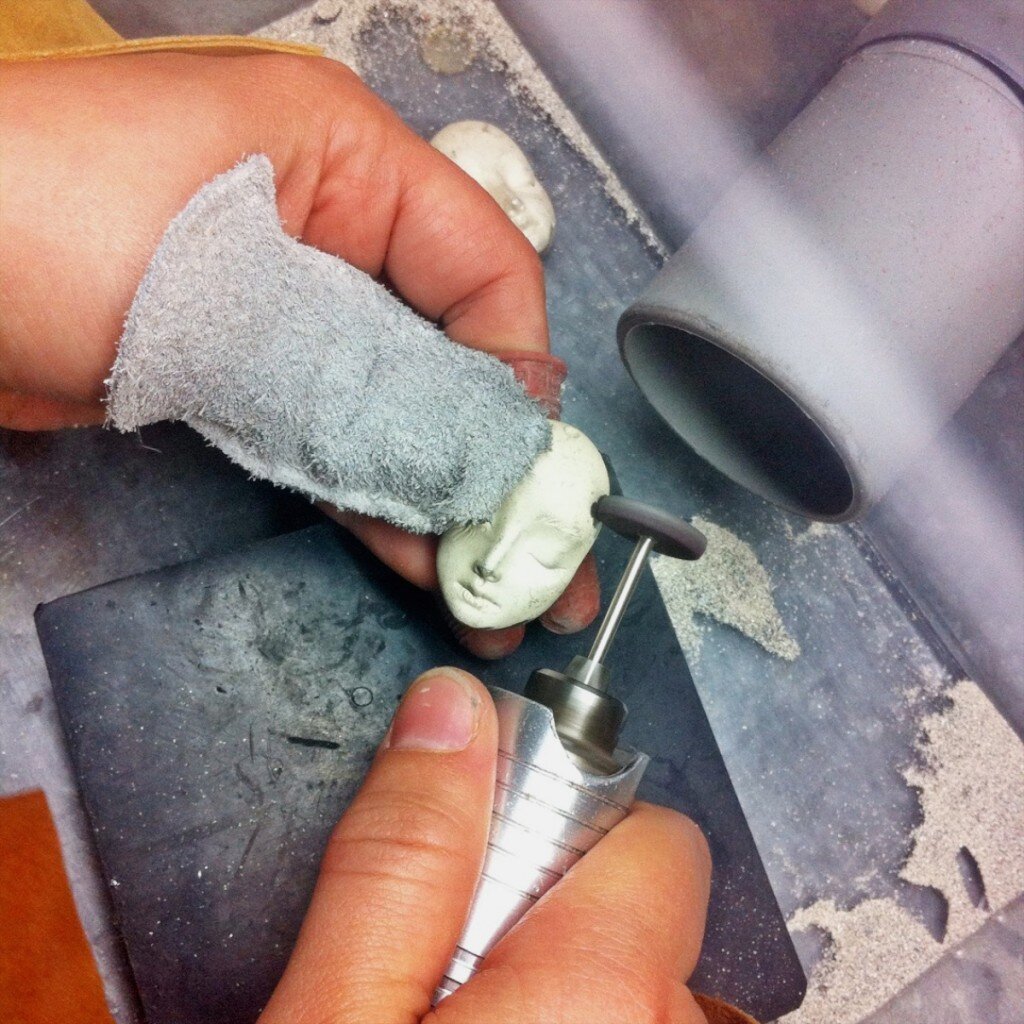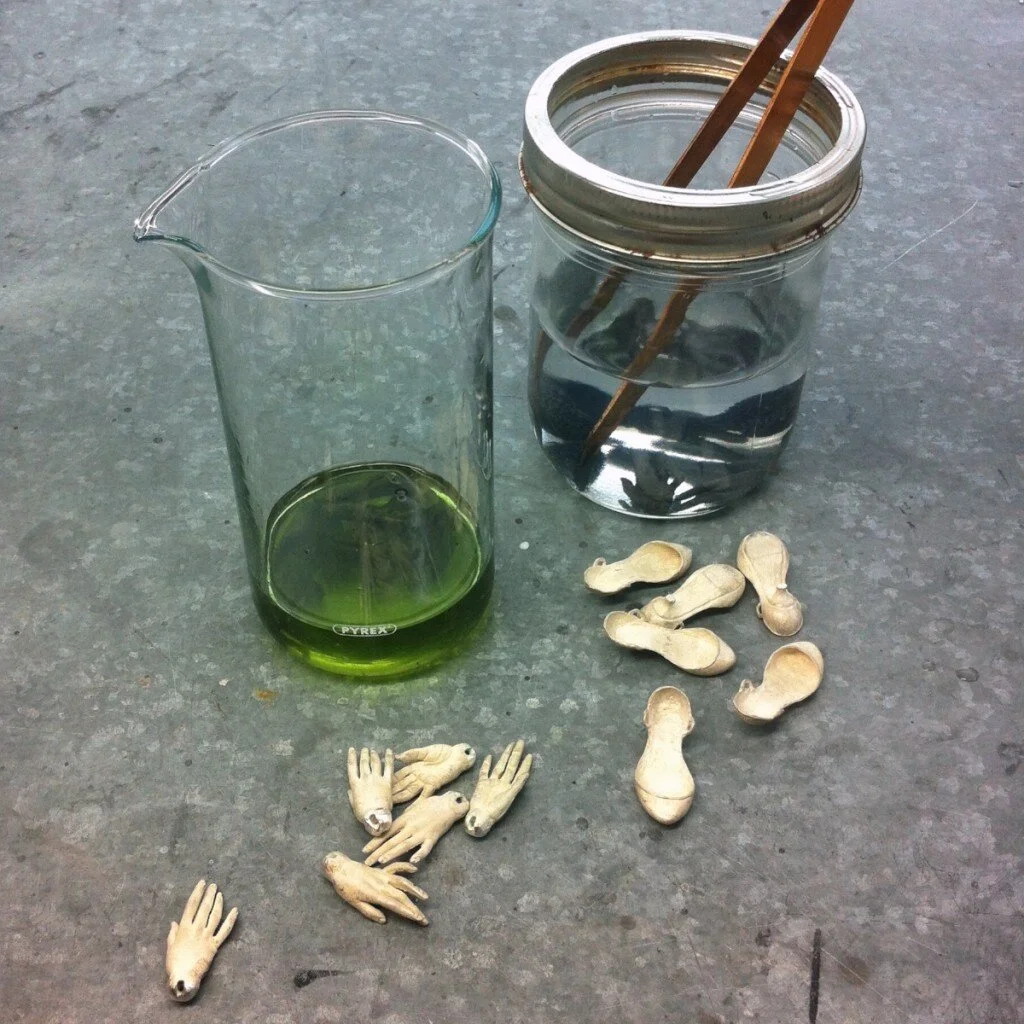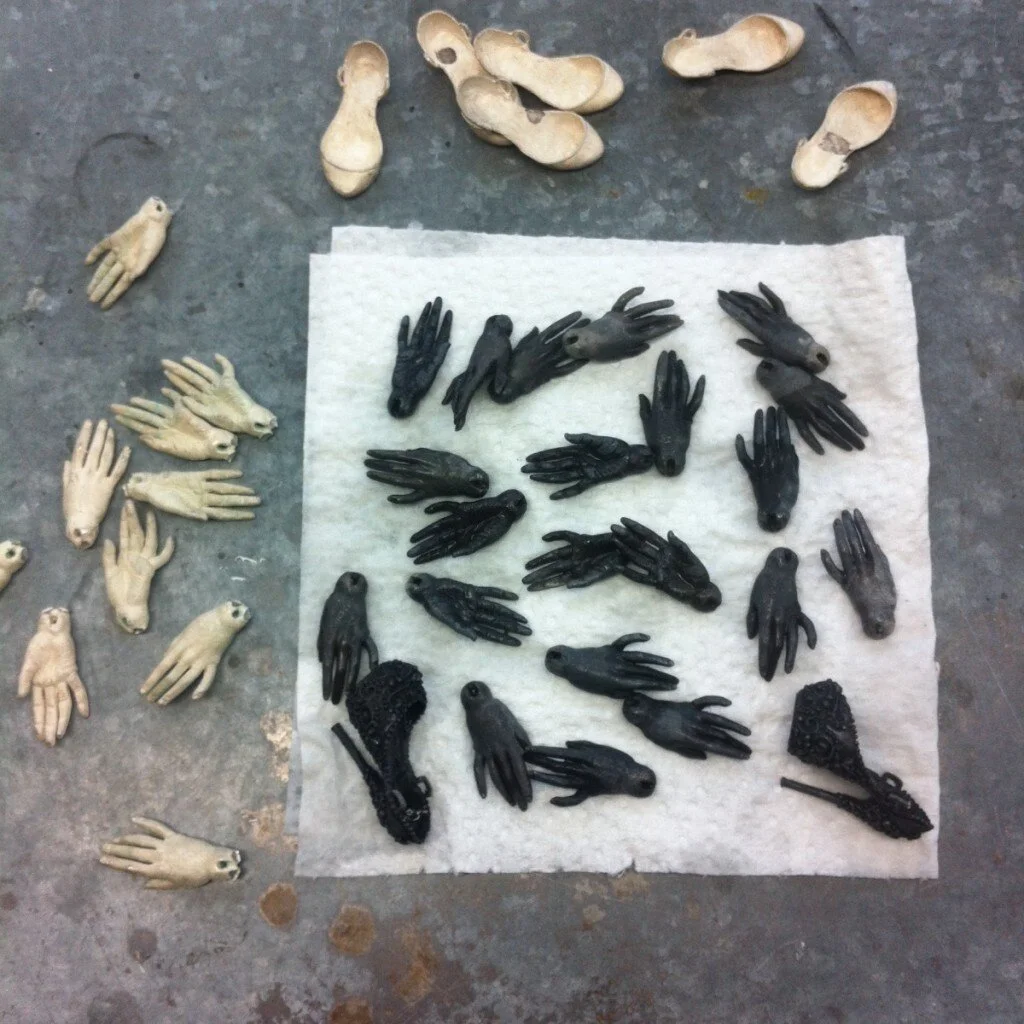I don't know about you, but my last week was dedicated almost entirely to making sterling silver jewelry and doll accessories for orders. And by making, I mean 'finishing' it. And by finishing, I mean clipping, cutting, grinding and polishing raw silver castings to the point where they actually look silver. They start out looking nothing like the precious little things they become. Check it out.
Ultrasonic clean: Metals are dirty after casting and need a very good cleaning. After a short walk home from the local artisan foundry with my heavy bag of dirty silver, I throw a batch of it into my ultrasonic machine before the work can begin.
Keeping an orderly work surface: For some reason artists are portrayed and perceived as messy individuals. It never made sense to me, because creative pursuits requires a good deal of strategic planning, prioritizing and execution. I maintain order as I work, so as not to become overwhelmed and discouraged by the accumulation of production debris.
Grinding: Ok, now it's time to get my hands really dirty. I use safety equipment such as solid particle extraction to protect myself from respiratory damage; an eye/body barrier to keep high velocity metal shards away from me, and finger armor to safeguard my hands from friction burns and savage skin gouging by spinning burs and abrasive wheels. Brrrrr.....they are sharp, fast and nasty.
Acid bath: Now my freshly de-sprued and ground pieces go for a little dip in some relatively mild acid, which still burns human skin on contact. I use precautionary measures, but accidents still happen. Usually, this is when I discover all the little cuts on my hands from hours of grinding because they sting double when acid gets splashed on them.
Post-acid dip: This particular type of acid, turns silver black. I love black patina because it increases contrast between recessed and raised areas by making intricate details stand out more against the background. Sometimes, instead of dipping pieces, I apply acid with a tiny brush to selected areas. Almost all of my metal works feature black patina. It brings out the depth of each piece.
Tumbling: Now that my parts are black as pitch, it's time to burnish them to a satin shine inside a tumbler full of stainless steel shot. While a variety of finishes can be achieved, I prefer satin finish on my jewelry, which is shiny, but not brilliantly so. During the course of several hours, the tumbler shot removes black patina from raised surfaces, while leaving it inside finer details, thus making it stand out against the smooth, bright areas.
Ready for assembly: When my parts are shiny, I sort them, dry them and bag them in order of priority. Gradually, shoes get laces and buckles attached, pendants get bails and chains, while doll's 'clothes', such as that Crow Helmet for example, get put together from multiple parts and embellished with additional accents.
And that's the gist of my metalworks. I hope that it was both entertaining and informative to you. I think I'll go stick my hands in some ice now.


